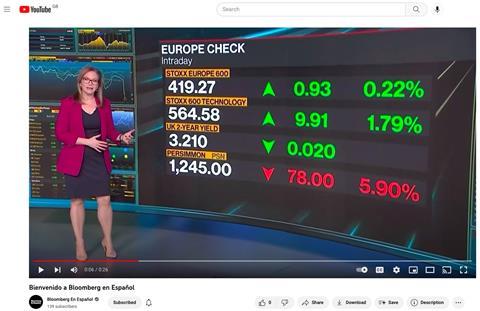Jesse Shemen, CEO and co-founder of AI dubbing firm Papercup, reveals his thoughts on YouTube’s latest feature

In January alone, YouTube viewers watched over 2 million hours of dubbed videos daily. But for creators without the means to invest in developing content in multiple languages, viewers – and revenue by extension – are being left on the table.
YouTube’s recently launched Multi-Language Audio (MLA) feature looks set to drastically change this. Simply put, it allows channel owners to add a host of tracks to a single video – meaning that audiences across the globe can watch content in their chosen language.
With the feature now accessible to over 10,000 content creators and the rollout expected to extend to 25,000 brands and influencers, the watch figures of dubbed videos are primed to catapult. Predictions suggest that the feature could lead to content that drums up a staggering 90% of global daily watch time. And while this is undoubtedly critical for viewers, what exactly are the benefits for creators and brands?
The benefits of one streamlined channel
Before multi-language audio tracks, it was standard practice to create market specific channels to tap into entirely new audiences. This was the case for all kinds of videos from instructional cooking and gardening footage to content headed up by world-famous magazines and influencers like Vogue and Mr Beast.
But the resource needed to maintain multiple channels can be prohibitive at best – with creators having to moderate more content, create thumbnails, translate descriptions, and even hire additional staff to help manage the workload.
Theoretically, the multi-language audio feature will do away with this. YouTubers will now be able to apply MLA to videos on existing channels, ultimately meaning they can unlock additional value from their back catalogue while also avoiding the time commitment and associated costs of running more than one channel.
Removing the barriers of traditional dubbing
But creators and brands can’t take full advantage of this feature alone. They need to partner directly with third-party dubbing providers to create audio tracks for their videos.
Companies like Papercup have a significant role to play here. Its machine learning-based tech localizes videos into other languages using AI voices that have all the warmth and intonation of human speech. So far, AI dubbed videos produced by Papercup have reached over 365 million people in non-English speaking territories.
Monetisation opportunities
A video that’s viewable in multiple languages drives metrics that YouTube’s algorithm (and advertisers) like – including higher engagement measured by watch time. It’s very likely that audiences watching videos in their native language will be engaged for longer — and the longer the watch time per view, the greater the ad exposure.
While CPM (cost per mille, or the amount an advertiser pays for 1000 ad impressions) might dip with greater international reach in geographies that command lower CPMs, the overall revenue generated will increase.
It makes sense then that investment vehicles looking to back YouTube channels expect MLA-enabled top channels to generate six to seven figures per language. If this is to be the case, it makes sense to prioritise countries with higher CPMs – with Spanish, Portuguese and Arabic-speaking countries topping the list.
Amplification and analytics for content owners
There will understandably be questions around how those that adopt the feature can assess its impact. But it’s a concern that YouTube has already considered. The platform provides analytics for each language track, allowing content owners to understand exactly where their views are coming from and, in turn, adapt their strategies accordingly.
While it’s clear that MLA is a big deal for viewers – it presents even greater opportunities for creators and brands. It not only helps to substantially expand their existing audiences, but also tap into entirely new markets. By laying the groundwork for effective partnerships that remove the barriers associated with traditional dubbing, creators and brands are in pole position to thrive.

Jesse Shemen is CEO and co-founder of AI dubbing firm Papercup.







No comments yet